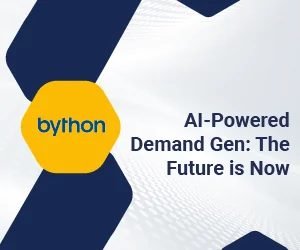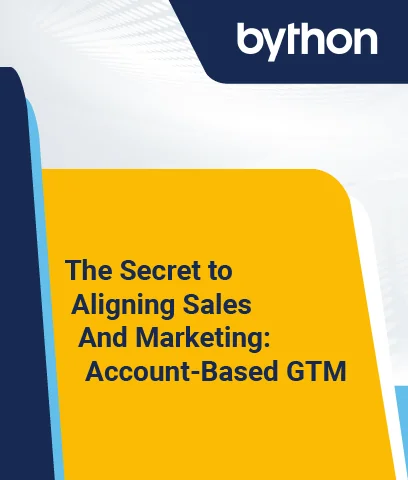Based on the recently conducted survey from 2017, there were at least 5.9 million contingent workers who claimed to be employed. About 3.8 percent from that total have worked in the U.S. So why is contingent workforce management so important, and why should you invest more into it? To name a few, here’s why.
What is Contingent Workforce?
Contingent workforce management is when a company deals with employees working for the company from the outside. This would mean that employees are not given traditional benefits that would typically apply for employees who work for a company full-time.
Contingent Worker Benefits
Despite working off-site and not receiving your typical benefits full time-on-site, there are other benefits to consider when it comes to managing a contingent workforce. Here are some benefits to look forward to.
-
Less Financial Worry
When it comes to contingent work, not a lot of financial compensation takes place. This will benefit your company since you don’t have to worry a lot about paying for benefits, time off, and overtime. With contingent workers, your company only has to worry about the agreed pay rate that you first offered to your employees.
-
Instant Revamping
This refers to the amazing expertise provided by your contingent employees. The perks of dealing with contingent employees include having excellent insight, especially from the end of things. It’s better to have the job done by a seasoned professional that’s had quite some experience with the field rather than passing on the work to someone that might be working full time because contingent workers tend to get the job done when it comes to revamping your entire brand.
-
Flexible Hours
Another perk that contingent workers have is pretty all the time in the world to do the things that they are good at. Even though that may sound like an exaggeration of things, flexibility is one of the benefits that contingent workers truly have. When working contingently, you’re working at your own pace, but also getting tasks done at the same time.
Tips to Create a Contingent Workforce Management Plan
-
Provide More Management Times
It’s important to provide as much flexibility as possible. When doing so, think about what can be done by certain contingent workers and assign those tasks during the appropriate time.
-
Distribute Contingent Workforce Activities
Along with providing flexible work hours, it’s important to divide up the work amongst all contingent workers. This will create an easier system between you and a contingent worker.
-
Ensure that your CWM Plan Fits Your Business Needs
This also refers to hiring the talent that best fits your company. Figuring out the needs for your business will easily help you plan out an effective contingent workforce management plan.
Contingent workforce management best practices:
-
Get external support
Allow your contingent workers to get the external support that they need from your company. This means that you should outsource your contingent workforce management to an MSP, or a managed service provider. There’s more about this in the article. Stay tuned!
-
Make sure you are vendor-neutral
If you choose to outsource your contingent workforce management to external support, then the next step is making sure that your company stays vendor-neutral. As more MSP models become more vendor-neutral, this opens up opportunities for your company, especially with ensuring that staffing requirements are fulfilled at competitive prices with the best talent you’ve got.
-
Reshape and reorganize your company’s processes
The best strategy to improve your company’s contingent workforce management is through revamping the process. Create a detailed plan that will allow all of the departments within your company to be united rather than dispersing into different plans in managing their own department. This will assist your company in centralizing in one place, especially with your contingent management program.
-
Make the most of innovative technology
Constant use of technology is where things are at with businesses nowadays. Consider investing in VMS, or a vendor management system that can act as a central hub that can oversee the entire management of your company’s contingent workforce. This will give you more clarity when dealing with different aspects of the system such as contracts, expenses, time logs, compliance, performance reviews, and many more.
(Download Whitepaper: What Contingent Workforce Management Looks Like)
Challenges Faced in Contingent Workforce Management
To name a few, there are some challenges that you may face with contingent workforce management.
These challenges include:
- The lack of communication,
- Compensation agreements and
- Poor organization.
Although each component sounds self-explanatory, the best way to find out for yourself is by reading through this article about the top challenges companies can face with contingent workforce management.
9 Tips for Managing Contingent Workforce
-
On-Demand, Secure Access
Offering shared access to platforms such as Dropbox, Google Drive and Box will increase the opportunities for contingent workers. This will show that you trust them and vice versa. When you enforce these privileges, it’s important to secure such assets before distributing them.
-
Simple Management of Internal and External Assignments
Keep track of assignments through platforms such as Slack or Asana. This will keep the project manager and workers on top of things. As for internal and external assignments, it’s better to separate the two different assignments to avoid any confusion within the “to-do” list you’ve created. External assignments are mostly assigned for an entire agency, while internal assignments are given to creatives, allowing them more freedom to conduct their own reviews.
-
Eliminate DAM Headaches and Costs
DAM, or digital asset management are headaches for a majority of companies. To avoid such headaches, freelancers and creatives should be discouraged to no longer offer DAM services to clients. This is a way to cut costs and solve the problem overall.
-
What Time Zones?
It’s going to be morning, afternoon, or evening somewhere in the world. It’s essential to keep your workers on the same page as you despite the different time zones. One solution to resolve this problem would be keeping all of your contingent workers under one messaging platform. As mentioned before, Slack is the best platform to use when it comes to communication, but there are other messaging platforms you can alternatively use such as WhatsApp and Messenger.
-
Utilization Visibility
This tends to cause contingent workers to face issues with a lot of companies. So to decrease the chances of this happening would be actually doing the manual time and effort of tracking hours and costs of said contingent services. Once that’s been said and done, these tracked reports should be notified to your contingent worker that’s been assigned a certain schedule.
-
Integration with External Tools
Converting to working in a certain way can be difficult for contingent workers. But, integrating external tools such as Slack. Google Drive, Dropbox, and SharePoint will allow you to oversee activity with your contingent workers as well as keep everybody on the same page while creating more hassles to disagreeing with what’s the best way to work a certain way.
-
Evaluate Your Current Workforce Situation
Figuring out what your workforce’s needs are is probably one of the first steps to do before moving on to making the next decision. Even though this can be applied to managing effective contingent workforces, this can also work for other things such as routines, and other ways tools or systems your company works with.
-
Put Technology to Good Use
By technology, we mean every single gadget that’s known to man from the 21st century. Applying this into your routine as well as your contingent workforce will make your job easier.
-
Work with A Managed Service Provider (MSP)
This will also be a big-time benefit because it will make your job easier as well as the MSP’s job more productive. Once working closely with them about technology, you will not only have a good relationship but also successful experience in managing effectively.
Future of Contingent Workforce Management
Overtime, contingent workforce management will benefit companies in the long run. Seeking the best talent through contingent workers is a prime example of that. When thinking about the future of contingent workforce management, one thing to remember is how much of a high demand it has, especially in the tech world, and during such a time such as this pandemic.
To simply put it, there’s potential for contingent workers, and more opportunities will continue to flourish.
Final Thoughts
It can sound a little complicated at first, but managing a contingent workforce just takes good practice, motivation, and keeping things transparent. Yes, there are some challenges one can face when it comes to overseeing a contingent workforce management system. However, in all honesty, there are innumerable amounts of solutions that you can apply to your company.
One of these solutions to mainly consider would be reshaping and reorganizing your process as a whole within your company. Another thing to keep in mind is finding external support for your company. After reading this article and moving towards this direction, it’s likely guaranteed that you’ll succeed when it comes to managing a contingent workforce system.
***
Aileen Padua is an aspiring social media coordinator. She is currently majoring in Advertising at Fresno State University. With her understanding of the power of social media, Aileen is passionate about preserving and enhancing the image of one’s reputation in the public eye.







